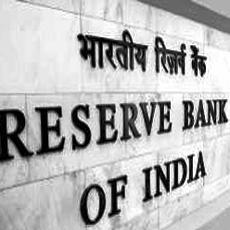The Reserve Bank of India will announce the third quarter review of its Monetary and Credit Policy on January 29.

The functions and focus of RBI have evolved in response to the changing economic environment. Its history is not only intrinsically interwoven with the economic and financial history of the country, but it also gives insights into the thought processes that have helped shape the country's economic policies.
Here we present some facets of RBI's history.
Inception
The history of RBI dates back to 1926, when the Royal Commission on Indian Currency (popularly known as Hilton Young Commission) recommended the establishment of a central bank to be called the 'Reserve Bank of India'.
It was on March 5, 1934 that the Reserve Bank of India Act, 1934, (II of 1934) was passed. It constituted the statutory basis on which the bank was established. On April 1, 1935, RBI commenced its operations with Sir Osborne Smith as the first Governor of the bank. The bank was constituted as a shareholders' bank.
It was constituted to:
The bank began its operations by taking over from the government the functions so far being performed by the Controller of Currency and from the Imperial Bank of India, the management of government accounts and public debt.
An interesting feature of the Reserve Bank of India was that at its very inception, the bank was seen as playing a special role in the context of development, especially agriculture. Earlier, RBI acted as the Central Bank for Burma and Pakistan till the invasion of Burma by Japan and the Independence of Pakistan.
RBI Timeline: Major events
The first RBI notes were issued in the year 1938. An important milestone in the life history of RBI is 'nationalisation' in the year 1949. In the same year the Banking Companies Act was passed, which was later renamed as the Banking Regulation Act. The Act required banks to maintain liquid assets for the first time.
India became a Republic in 1956. Since then there were paradigm changes in the economic and the monetary policies of the nation. Five-year plans were introduced which took the country towards a planned economy. The First Five-Year Plan was launched in the year 1951. The State Bank of India was formed in the year 1954.
To meet the expanding currency requirements, the system of note issue was changed in the year 1956. Earlier, Proportional Reserve System was followed requiring the Reserve Bank to maintain 40 per cent gold and foreign exchange reserves against note issue to a minimum reserve system.
When India commenced its Plan endeavour, the development role of the bank came into focus, especially in the sixties when the Reserve Bank, in many ways, pioneered the concept and practice of using finance to catalyze development.
The bank was also instrumental in institutional development and helped set up institutions like the Deposit Insurance and Credit Guarantee Corporation of India, the Unit Trust of India, the Industrial Development Bank of India, the National Bank of Agriculture and Rural Development, the Discount and Finance House of India etc. to build the financial infrastructure of the country.
The early 1970s witnessed double-digit inflation and a recession, which were well managed by increasing the Statutory Liquidity Ratio and by taking various other measures.
The Foreign Exchange Regulation Act, 1973 came into force to conserve foreign exchange. Its administration was entrusted to RBI. Even though RBI concentrated on rural development since its inception, a remarkable event in this context was the setting up of Regional Rural Banks in 1975 as alternative agencies to provide credit to rural people.
The seeds of liberalisation were sown in the year 1980 with the setting up of S Chakravarty Committee to review the working of monetary system. Its recommendations had far reaching consequences. The Securities and Exchange Board of India was established in the year 1988 to deal with the development and regulation of the securities market and investor protection. Certificates of Deposit (CDs) and Commercial Paper (CPs) introduced in India in 1989 to widen the monetary instruments and give investors greater flexibility.
The same year Banking, Public Financial Institution and Negotiable Instruments Laws (Amendment) Act was enacted to encourage the culture of use of cheques in India.
With liberalisation, the bank's focus has shifted back to core central banking functions like monetary policy, bank supervision and regulation, and overseeing the payments system and to developing the financial markets.
In 1991, with the external payments crisis, te was rupee devalued in two stages. Unified exchange rate was introduced in 1993. To maintain the foreign exchange market in India, Foreign Exchange Management Act was introduced in 1999.
Conclusion
At the turn of the Millennium, RBI started reaping the benefits of its long-term plans framed since its inception. Even when the well-built Western economies started crumbling in the recent recession, Indian economy showed a growth rate in the GDP far better than that of Western nations.
The well-planned policies of RBI have been one among the prime reasons for the strong Indian economy.